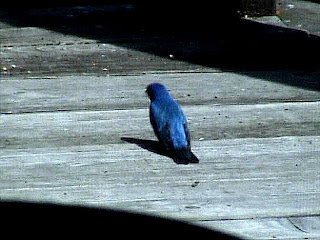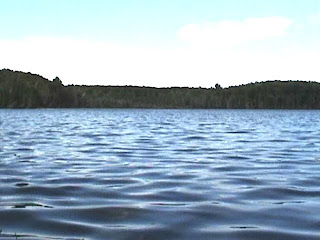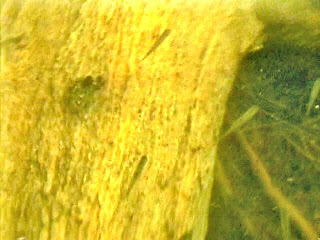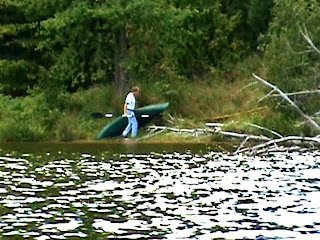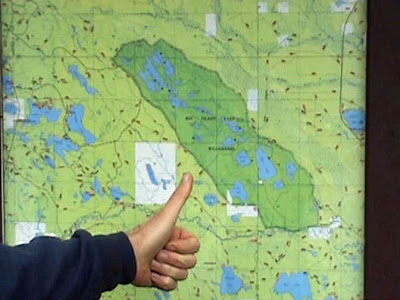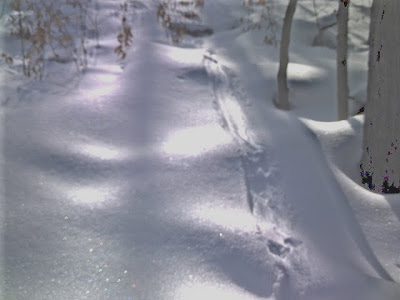
The trail into Ned's Lake,(in the Big Island Lake Wilderness Area) is about a mile north of our driveway. North of our drive, Kentucky Trail is a seasonal road, which is traversed by snowmobiles in the winter. It is always an interesting time to try the road for the first time in the spring. But with all wheel drive we had no problems. The road still has some packed drifts in spots, but we made it to the trail with no problems.
Blush Lake, where our home is, now is open water, and we have just patches of snow in the woods. Odd that just such a short distance North there was so much snow. The trail was covered with snow about a foot deep. It was crusted, and you could walk on top and only fall through now and again which kept things interesting, but the trail in is only about a quarter mile, and we were up for a hike.

We did not see any animal tracks, although there must be at least one porquipine nearby as we found his "calling card".

Primitive camping is available at a site near the lake, and this seems to be a popular choice for those who are not up for a long hike in and want trout.

Based on the condition of the snow, and the fact that Ned's Lake is small and well sheltered by the trees, we weren't totally surprised to see that it was still ice covered. I was surprised that it didn't appear to be breaking up at all.

The last Saturday in April is the opening day for trout, and Ned's Lake, as well as Twilight Lake, are stocked with trout by the DNRE. I think that even with the projected warm weather this next week, that ice might make it hard to fish!








